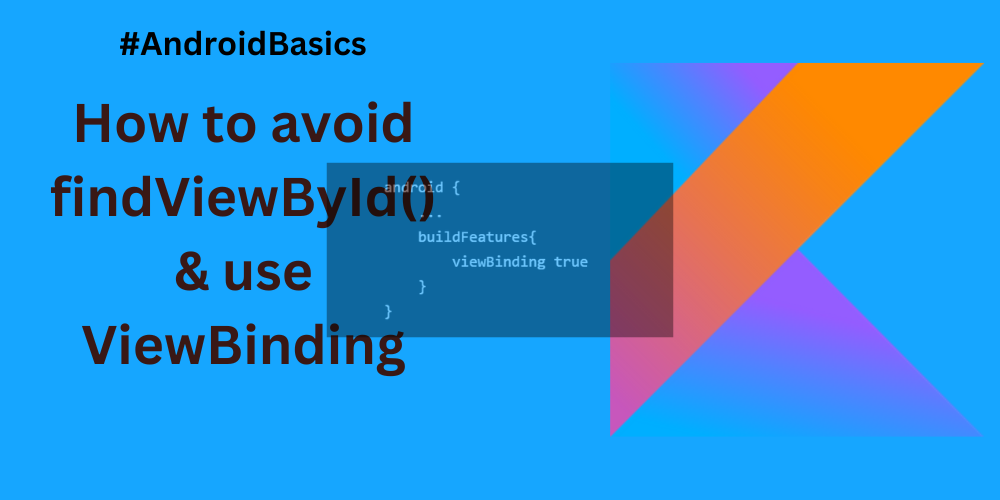Introduction:
In the dynamic world of Android development, staying up-to-date with the latest practices can significantly enhance your coding experience. One such improvement is the introduction of View Binding in Kotlin, which offers a more robust and type-safe alternative to the traditional findViewById method. In this blog post, we’ll explore why you should consider avoiding findViewById and how View Binding in Kotlin can simplify your Android UI development.

Use of ViewBinding:
View Binding is a feature introduced in Android to address the shortcomings of findViewById. It generates a binding class for each XML layout file, providing direct references to all the views contained within that layout.
Enabling View Binding:
To enable View Binding in your project, add the following line to your app module’s build.gradle file:
android {
...
buildFeatures{
viewBinding true
}
}
Use View Binding:
To use view binding inflate your layout as
var binding = ActivityMainBinding.inflate(layoutInflater)
Access views directly through the generated binding class:
binding.myTextView.text = "Hello World !"
Now, let’s delve into the reasons behind steering clear of findViewById, exploring its limitations, and uncovering the advantages that View Binding brings to Android development with Kotlin.
Click Here to learn about viewBinding in detail.
Limitations of findViewById:
Type safety concern:
The findViewById method in Android uses the view’s ID to locate and return the corresponding View object. However, this approach lacks type safety, as the compiler cannot ensure that the returned View matches the expected type. This can lead to runtime crashes and debugging challenges.
Nullability issues:
findViewById returns null if the specified ID is not found. This introduces the need for null checks, adding complexity to your code and making it more error-prone.
Advantages of ViewBinding:
Type Safety:
With View Binding, the generated binding class includes direct references to all the views by their IDs, ensuring type safety and reducing the likelihood of runtime crashes.
Conciseness:
View Binding eliminates the need for manual casting, resulting in more concise and readable code. Direct access to views is available through the generated binding class.
Null Safety:
Since View Binding generates non-null references to views, it eliminates the need for null checks, making your code more robust and less error-prone.
Conclusion:
By adopting View Binding in Kotlin, you can bid farewell to the cumbersome findViewById method and embrace a more modern, type-safe, and concise approach to Android UI development. Make the switch today and experience the benefits of cleaner, more maintainable code in your Android projects. Happy coding!
To learn more about Kotlin Programming, Click Here.